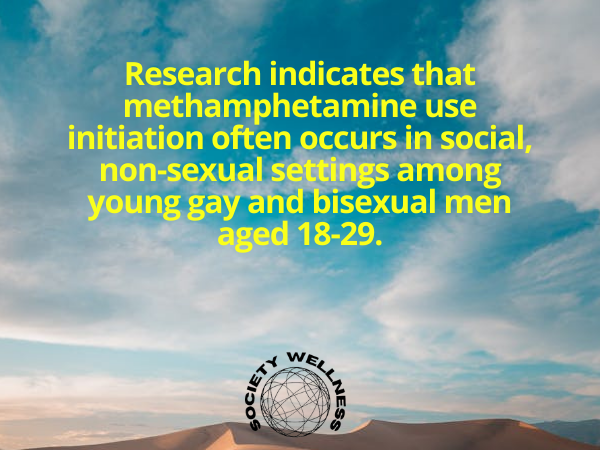Methamphetamine, commonly known as meth, crystal, ice, or crank, is a highly addictive stimulant that has had a devastating impact on many communities, particularly the LGBTQ population. Meth is often associated with chemsex culture, increased sexual risk-taking, and mental health challenges, making it an especially dangerous substance.
The LGBTQ community experiences disproportionately high rates of substance use disorders, including meth addiction. Meth is widely used for its energizing and euphoric effects, but its long-term consequences can be life-threatening. Because meth use progresses rapidly, individuals can develop dependency in a short period, leading to severe physical, emotional, and social damage.
Despite the dangers of meth use, many LGBTQ individuals do not seek help due to stigma, lack of resources, or fear of discrimination. That’s why LGBTQ-specific addiction treatment programs are crucial for helping individuals recover in a safe, inclusive, and affirming environment.
In this guide, we will explore:
- Why meth use is prevalent in the LGBTQ community
- The most common signs of meth use
- The short-term and long-term effects of meth addiction
- How LGBTQ-specific addiction treatment programs can help
If you or someone you love is struggling with meth addiction, recognizing the signs early and seeking LGBTQ-affirming treatment can be life-saving.
Why Is Meth Use Common in the LGBTQ Community?
LGBTQ individuals face unique challenges that increase their vulnerability to substance use disorders, including meth addiction. Studies show that meth use among gay and bisexual men is significantly higher than in the general population, with some surveys estimating that up to 20% of gay and bisexual men have used meth at some point.
Factors Contributing to Meth Use in LGBTQ Spaces
1. Chemsex Culture and Party Scene
- Meth is often used in “party and play” (PnP) or chemsex scenes, where it is combined with other drugs to enhance sexual experiences.
- Many individuals report feeling more confident, uninhibited, and sexually active while using meth.
- The link between meth use and unsafe sex practices increases the risk of HIV, STIs, and long-term health consequences.
2. Coping with Trauma and Minority Stress
- Many LGBTQ individuals experience discrimination, rejection, or trauma, leading to higher rates of depression, anxiety, and PTSD.
- Meth provides a temporary escape from emotional pain by increasing dopamine levels and producing feelings of euphoria, energy, and self-confidence.
3. Social Acceptance of Drug Use in LGBTQ Spaces
- LGBTQ nightlife and club culture often normalize the use of stimulants like meth.
- Peer influence and the desire to fit in can encourage experimentation and ongoing use.
4. Mental Health and Co-Occurring Disorders
- LGBTQ individuals are twice as likely to experience mental health conditions, including bipolar disorder and schizophrenia, which can increase the likelihood of substance use.
- Without access to proper mental health treatment, many individuals turn to meth as a form of self-medication.
Because of these factors, meth use can quickly spiral into addiction, making it essential to recognize the warning signs and seek support early.
Common Signs of Meth Use
Meth use produces both immediate and long-term changes in a person’s physical appearance, behavior, and mental state.
Physical Signs of Meth Use
- Extreme weight loss due to suppressed appetite
- Dilated pupils and rapid eye movement
- Excessive sweating and overheating
- Severe dental issues (“meth mouth”) – decaying, broken, or missing teeth
- Skin sores and scabs from compulsive scratching or picking
- Uncontrollable twitching, jerky movements, or fidgeting
Behavioral and Psychological Signs
- Erratic or aggressive behavior
- Intense mood swings, paranoia, or hallucinations
- Inability to sleep for long periods (“tweaking”) followed by sudden crashes
- Engaging in risky behaviors, including unsafe sex or crime
- Neglecting responsibilities at work, school, or home
- Social withdrawal from friends and family
Cognitive and Emotional Signs
- Impaired decision-making and judgment
- Delusions of grandeur (feeling overly powerful or invincible)
- Memory loss or difficulty concentrating
- Extreme anxiety or panic attacks
- Depression, suicidal thoughts, or severe emotional distress
Meth addiction progresses rapidly, and the longer someone uses meth, the harder it becomes to quit without professional help.
Short-Term and Long-Term Effects of Meth Addiction
Methamphetamine is one of the most dangerous and destructive drugs, causing immediate and lasting harm to both the mind and body.
Short-Term Effects of Meth Use
- Intense euphoria and energy boost
- Decreased need for sleep
- Increased heart rate and blood pressure
- Heightened sexual arousal and risk-taking
- Loss of appetite and dehydration
Long-Term Effects of Meth Addiction
- Severe mental health decline (paranoia, hallucinations, and psychosis)
- Increased risk of stroke, heart attack, and organ damage
- Irreversible brain damage affecting memory and cognition
- HIV and hepatitis C from unsafe sex and needle-sharing
- Permanent dental damage and physical deterioration
Meth use is highly addictive, and withdrawal symptoms—such as severe depression, fatigue, and cravings—make it extremely difficult to quit without specialized addiction treatment.

How LGBTQ Meth Addiction Treatment Programs Can Help
LGBTQ-specific addiction treatment centers provide a safe, affirming space where individuals can receive comprehensive care without fear of judgment or discrimination.
1. LGBTQ Partial Hospitalization Program (PHP)
- Best for individuals who need intensive, full-time treatment.
- Includes daily therapy, medical detox support, and trauma counseling.
2. LGBTQ Intensive Outpatient Program (IOP)
- Best for individuals transitioning from inpatient care or needing structured recovery support.
- Provides flexible therapy schedules while allowing individuals to maintain responsibilities.
3. LGBTQ Evening Outpatient Treatment Program
- Best for individuals balancing work, school, or personal commitments.
- Offers evening therapy sessions for continued addiction recovery.
4. LGBTQ Meth Addiction Treatment Program
- Best for individuals struggling with chronic meth addiction and relapse.
- Focuses on trauma healing, behavioral therapy, and harm reduction.
Meth addiction requires long-term treatment and support, but recovery is possible with the right care and resources.
Conclusion
Meth use is a serious issue in the LGBTQ community, and many individuals struggling with addiction feel isolated, ashamed, or unsure of where to turn for help. However, recovery is possible with the right support system, resources, and LGBTQ-affirming treatment programs.
If you or a loved one is experiencing the signs of meth addiction, taking action now can prevent long-term damage and save lives. Seeking help is not a sign of weakness—it’s a sign of strength and self-care.
Call LGBTQ Behavioral Health today at 888.964.8116 to learn more about our LGBTQ meth addiction treatment programs and take the first step toward a healthier, substance-free life.
FAQ About Recognizing Meth Use in the LGBTQ Community
What are the early signs of meth use?
Early signs of meth use include increased energy, lack of sleep, weight loss, dilated pupils, excessive talking, and erratic behavior. People may also exhibit skin picking, paranoia, and mood swings.
Why is meth use more common in the LGBTQ community?
LGBTQ individuals are more vulnerable to meth use due to chemsex culture, social acceptance of stimulant use, trauma, discrimination, and higher rates of mental health conditions like depression and anxiety. Many use meth to boost confidence, enhance sexual experiences, or cope with emotional distress.
What are the long-term effects of meth addiction?
Chronic meth use can cause severe dental decay (“meth mouth”), skin sores, extreme weight loss, paranoia, hallucinations, cognitive impairment, and increased risk of stroke, heart attack, or HIV from risky behaviors. Long-term users often experience permanent brain damage and mental health decline.
How can I tell if someone I love is using meth?
Signs of meth addiction include:
- Unusual bursts of energy followed by long crashes
- Neglecting work, relationships, and responsibilities
- Engaging in risky sexual behaviors or chemsex culture
- Severe paranoia, hallucinations, or delusional thinking
- Sudden weight loss and deteriorating hygiene
What LGBTQ-specific addiction treatment options are available for meth use?
LGBTQ-friendly treatment options include:
- LGBTQ Partial Hospitalization Programs (PHP) for intensive daily treatment.
- LGBTQ Intensive Outpatient Programs (IOP) for structured recovery support.
- LGBTQ Evening Outpatient Programs for flexible addiction treatment.
- LGBTQ Meth Addiction Treatment Programs tailored to identity-specific challenges.

